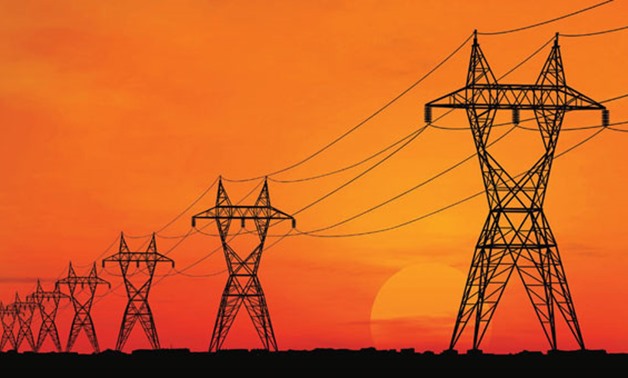
File: Electricity towers
CAIRO – 3 August 2018: A delegation from the Egyptian Electricity Transmission Company (EETC) and the Indian engineering firm Larsen & Toubro visited the location of grid inter-connectivity project with Sudan on Thursday.
Larsen & Toubro is the engineering company responsible for linking the electricity grids of Sudan and Egypt. There are already power links between Egypt and Jordan at capacity 450 megawatts and one with Libya at 200 megawatts.
The Ministry of Electricity said in a statement that the implementation of the new inter-connectivity project has already started to supply Sudan with electricity at a capacity of about 200-300 megawatts as a first stage. The linkage line is about 100 km long. The implementation will be in two phases with a total investment value of about $6.7 million within three months.
It comes in line with Egypt’s plan to becoming a regional energy hub benefiting of its the remarkable geographical location between three continents of Africa, Asia and Europe.
On 25 July, President Abdel Fatah al-Sisi opened four new power stations built at a total cost of $7.6 billion as part of the country’s development drive.
Three of the new power plants are located in the Upper Egypt governorate of Beni Suef, the new Administrative Capital, and Al-Burlus. They were designed and constructed by Siemens. Each of the plants will produce 4,800 MW of electricity annually at peak operations.
Sisi also opened one of the world’s largest wind farms, built at a cost of 12 billion Egyptian pounds ($673 million). State media said the Gebel el-Zeit station, located in the Red Sea province, has capacity of 580 MW.
The Ministry of Electricity's spokesperson, Ayman Hamza, said that power outages will end completely in Egypt by the beginning of 2019 after the completion of current replacement and renewal plan.
Hamza said in a phone call to Al-Hadath Al-Youm satellite channel that any blackouts occurred in the last period came as a result to the current replacement and renewal plan of generation and distribution networks.
In less than two years, the government managed to end electrical power shortages and even pave the road for surpluses.
When Abdel Fatah al-Sisi became president in mid-2014, he put a plan to prevent the outages included the construction of eight massive power plants.
Sisi's plan to end the outages includes exploitation of renewable energies. The government actively encouraged the private sector to establish its own solar and wind farms. It installed huge solar panels on the roofs of hundreds of government buildings and encourages Egyptians to create solar power plants on their home roofs. Some Egyptians sell electricity produced by their solar panels to the national grid.

Comments
Leave a Comment